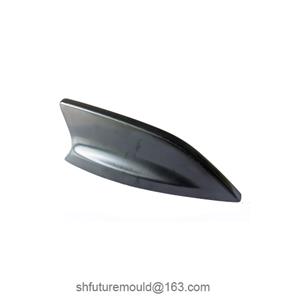Technological innovation and future trends of injection molds in the medical field
The production of medical devices places stringent requirements on the precision, complexity, and materials of injection molds. As medical technology advances and the demand for personalized healthcare grows, medical injection molds are evolving to meet increasingly complex manufacturing needs.
①. Technological Innovations
1. Advanced Mold Materials
Future medical injection molds will adopt more advanced materials, such as high-performance stainless steel, titanium alloys, and composites. These materials offer superior resistance to corrosion and wear, better suited to the high-intensity demands of the medical industry while also meeting cleaning and sterilization requirements.
2. Miniaturization and Precision
With the growing demand for minimally invasive surgical instruments and implants, miniaturized and highly precise mold designs are becoming essential. Technologies like microchannel structures, nanoscale machining accuracy, and complex multi-cavity mold designs will see broader applications in the medical field.
3. Smart Mold Technology
Modern medical injection molds are moving toward smart technology, integrating sensors and monitoring systems to track mold status and injection process parameters (e.g., pressure, temperature) in real-time. These intelligent systems can predict failures and optimize production efficiency.
4. Rapid Mold Change Technology
To accommodate the small-batch and diverse production needs of medical products, rapid mold change technology is emerging. By utilizing modular mold structures and automated mold-changing systems, switching times can be significantly reduced, enhancing production flexibility.
5. Green and Sustainable Manufacturing
Sustainable manufacturing is becoming a crucial direction for future mold technology. Optimizing runner designs to reduce waste, using recyclable materials for mold construction, and adopting low-energy injection molding processes contribute to more sustainable production.
②. Future Development Trends
1. Customization Driven by Personalized Medicine
As personalized medicine evolves, the demand for customized products like tailored prosthetics and orthodontic devices grows. Mold designs must become more adaptable to accommodate a wide range of specifications and shapes, enabling rapid production customization.
2. Integration of Additive Manufacturing
The application of 3D printing in mold manufacturing will become more widespread. Additive manufacturing can rapidly produce complex mold prototypes, shorten development cycles, and reduce costs.
3. Highly Efficient Automated Production
Future medical injection molds will integrate deeply with highly automated production lines, including robotic arms and automated assembly equipment. This will enable unmanned operations in production processes, significantly improving overall production efficiency.
4. Compliance with Global Regulatory Standards
As the medical device industry globalizes, mold design and manufacturing must comply strictly with various international regulations and standards (e.g., ISO 13485 and FDA requirements). This will drive mold designs toward greater standardization and precision.
5. Adoption of Ultra-High-Speed Injection Technology
The implementation of ultra-high-speed injection molding technology will further reduce production cycles for medical products while maintaining high-quality output, meeting the dual demands of efficiency and quality in the medical industry.




